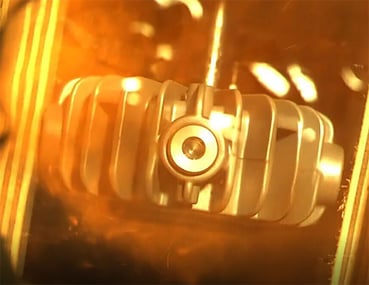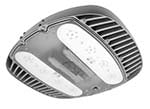The first steppingstone in selecting the correct light fixture is the accurate designation of the location.
Specifying Class I Division 1
Specifying the correct light fixture for an industrial project is a critical process. Areas with a probability of containing explosive gases, vapors or dusts demand special attention. Such hazardous locations use explosion proof lighting with CID1, CID2, CII or CIII certifications.
Selecting the correct certification has a major impact on project compliance and budgets.
Let's address some of the considerations that most specifiers go through.
Definition of explosion proof lighting:
 Explosion proof does not mean that a luminaire can withstand an external explosion. In fact, for CID1, it's assumed that explosive gases will penetrate the luminaire. One or more explosions will take place inside the light fixture. The design must contain the explosion and cool the gases before releasing them.
Explosion proof does not mean that a luminaire can withstand an external explosion. In fact, for CID1, it's assumed that explosive gases will penetrate the luminaire. One or more explosions will take place inside the light fixture. The design must contain the explosion and cool the gases before releasing them.
These lights withstand exposure to harsh elements without causing an explosion. A level of protection where installed ensures the safety of the environment.
Explosion proof lighting comes in different classes to address the location's specific requirements.
- Class I, Division 1: This class is applicable to areas where flammable concentrations of gases, vapors, or liquids are continuously or regularly present in the atmosphere under normal operating conditions.
- Class I, Division 2: This class is applicable to areas where flammable concentrations of gases, vapors, or liquids may exist in the atmosphere under abnormal operating conditions.
- Class II, Division 1: This class is applicable to areas where flammable concentrations of combustible dust exist in the atmosphere under normal operating conditions.
- Class II, Division 2: This class is applicable to areas where flammable concentrations of combustible dust may exist in the atmosphere under abnormal operating conditions.
- Class III, Division 1: This class is applicable to areas where easily flammable fibers or materials producing combustible residue or shavings exist in the atmosphere under normal operating conditions.
- Class III, Division 2: This class is applicable to areas where easily flammable fibers or materials producing combustible residue or shavings may exist in the atmosphere under abnormal operating conditions
These classes are crucial in determining the correct type of light for your application. Ensuring compliance with safety regulations and maintaining a safe working environment.
Explosion Proof Light Features
Safety always remains at the top of the list for critical performance criteria. For explosion proof lights, input voltage and lumen output are next on the list. Auto-ranging power supply design advancements allow operation in 120-277 VAC or 347-480 VAC environments.
Programming options offer solutions for finetuning power consumption and the subsequent lumen output. The beam profile selects the correct optics, which improves lighting quality. This choice reduces light fixture count while delivering target light levels. Nemalux offers a complimentary lighting layout and calculation service to support successful deployment.
As the last step, consider mounting hardware flexibility to address specific requirements on site. The Nemalux MR, XR, and AR offer adapters to maximize deployment opportunities. These mounts simplify project execution while minimizing luminaire types on a project.
Class Rated LEDs
LED lights are available with various ratings to suit different hazardous environments.
To simplify:
- Class I LED fixtures are suitable for areas with chemical vapors
- Class II LED fixtures are suitable for areas with concentrations of flammable dust
- Class III LED fixtures are suitable for areas with airborne fibers
LED lighting is available for the classes listed above. Allowing the selection of the right fixture. Meeting specific requirements of your location while enjoying the benefits of LED technology.


